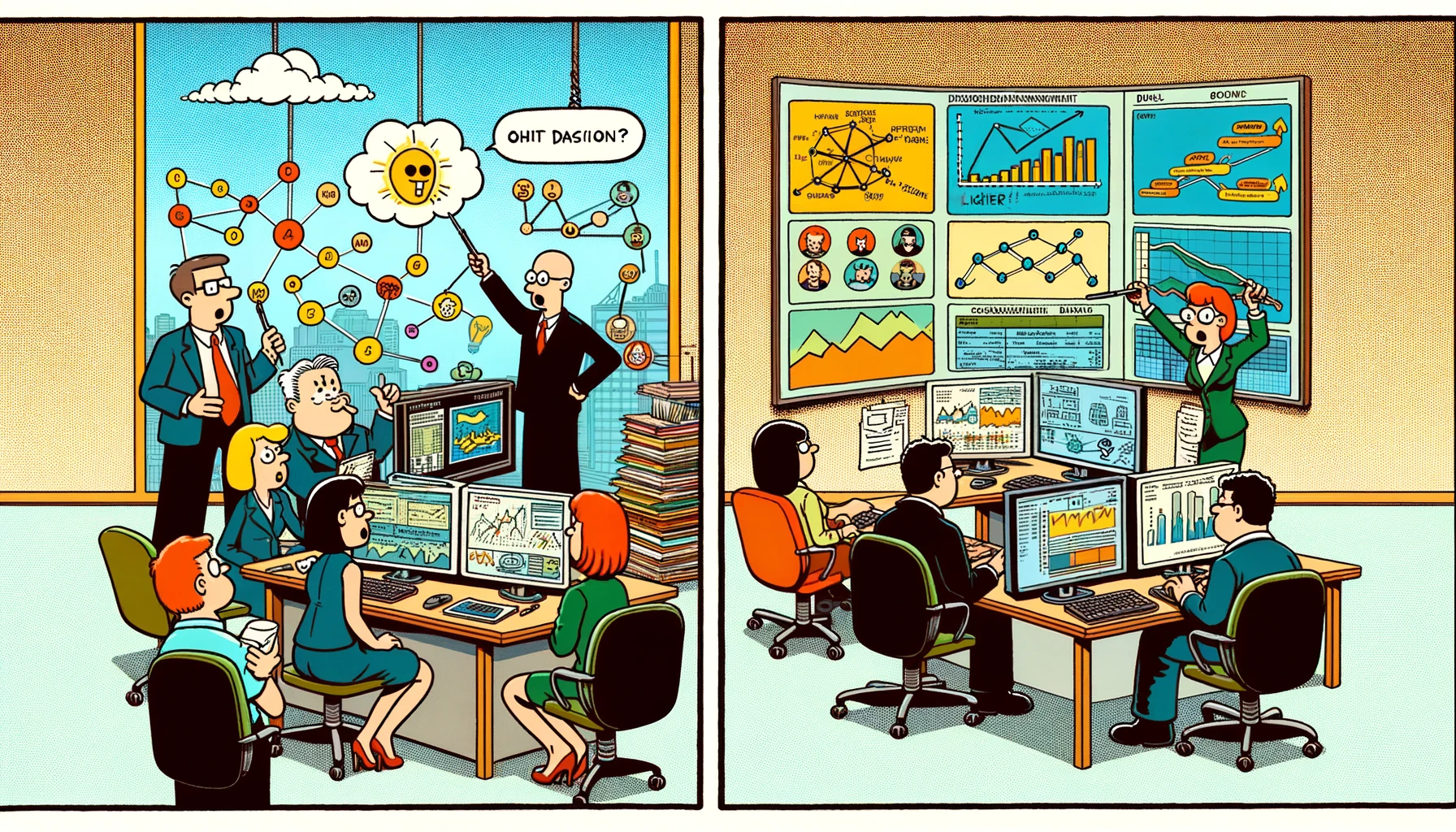
Blog post
Effective Communication in Remote Teams: Unleash the Power of ONA
Improve remote team communication with the data-driven insights provided by Organizational Network Analysis (ONA).

The Importance of Effective Communication in Remote Settings
Communication is the lifeblood of any organization, but it becomes crucially important in remote teams. In a world where work is increasingly networked rather than hierarchical, communication determines success or failure. Managers no longer have the face-to-face visibility they used to enjoy, making it more challenging to assess communication patterns and make informed decisions.
The Problem: Traditional Metrics Fall Short
In a remote setting, assessing communication can be difficult. While platforms like Slack or Microsoft Teams give some insight into who talks to whom, they don't capture the full story. Metrics like the number of messages sent or meetings held are often misleading. Furthermore, traditional management practices like performance reviews are skewed towards those good at self-promotion. A small percentage of employees contribute to most of the problems or successes, but it's hard to identify them accurately with traditional methods.
The ONA Solution: A New Lens to View Communication
Organizational Network Analysis (ONA) can provide a more nuanced understanding of your team's communication. ONA is a way of mapping out the various interactions among team members, providing a bird's-eye view of the flow of information and collaboration. By employing ONA, you can ask targeted questions like:
- Who do you go to for help and advice?
- Who motivates you?
- Who do you see as an outstanding contributor?
- Who needs additional support?
The answers to these questions are incredibly revealing. For instance, you might discover "quiet contributors" who are instrumental in team success but who may go unnoticed in traditional evaluations.
How to Integrate ONA for Improved Communication
- Choose an ONA Tool: Many performance management platforms now offer built-in ONA features. Ensure the tool can capture the information most relevant to your team's needs.
- Train Managers: Teach managers how to interpret ONA data. It's not enough to gather data; one must know how to use it.
- Regular Check-Ins: Use ONA to facilitate one-on-ones or team meetings. Discuss communication patterns, bottlenecks, or issues that the data reveals.
- Measure and Adapt: Over time, compare the ONA data to performance outcomes to validate your findings and adapt your communication strategies accordingly.
- Identify Key Players: Use ONA data to pinpoint the 15% of employees who make a 50% impact and focus on empowering them to do even better.
- Spot Troublemakers: Similarly, ONA can help you identify the 5% causing 50% of the problems. Take corrective action before these individuals harm team morale or productivity.
By applying ONA to assess communication within your remote teams, you stand a better chance of identifying both stars and problem areas more accurately than traditional methods can provide. This data-driven approach offers a new dimension of insight, enabling you to take targeted action that improves team performance.
For further reading on modernizing workplace evaluations and communication, check out SHRM's article on Fixing Performance Reviews for Good.
Incorporating ONA into your strategy doesn't just upgrade your communication; it revolutionizes it, giving you the data you need to transform your remote teams into highly effective units.
Latest posts

Ready to see Confirm in Action?
See why forward-thinking enterprises use Confirm to make fairer, faster talent decisions and build high-performing teams.









